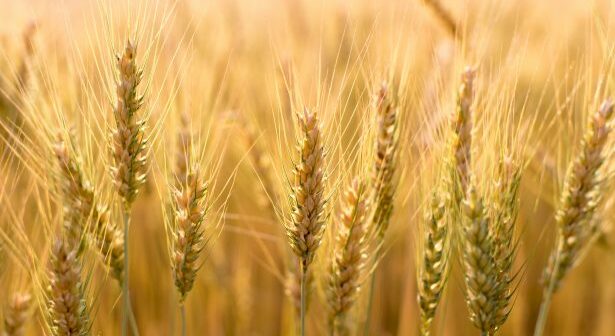Strong milling wheat and protein premiums are making for an easy decision to push crops for grain quality this season, says ProCam agronomist, Justin Smith.
But the washout winter and spring means crops could face a double challenge for meeting protein specifications – of depleted soil nitrogen (N) due to leaching, and compromised N uptake due to poor rooting, requiring carefully tailored agronomy, he points out.
“Where soil testing has been carried out, results indicate that soil N levels have been 20-30kg/ha below their usual levels in some places after all the rain,” reports Mr Smith.
“On top of that, root growth has been seriously compromised by waterlogging, because roots haven’t had to reach down far to find moisture. So not only is there less soil N available, but affected plants will also have greater difficulty accessing what’s there.”
In response, Mr Smith says these risks will need factoring into mid and late-season milling wheat nutrition, especially if the summer turns dry. However, one of the benefits of modern agriculture is that there are multiple foliar-applied treatments now available to supplement soil-applied granular N, he explains.
“These range from endophyte bacteria such as Encera, which fix atmospheric N inside the plant, to Twoxo Pro which stimulates the plant to improve N uptake. For the traditional flag leaf (T2) and ear (T3) foliar N spray timings, Pro+ N-Viron PCA has the advantage that it not only provides N directly into the leaf in an efficient urea form, but it also contains pidolic acid, which helps plants use N more efficiently. Which treatments are applied and when needs to be based on individual field needs. If ever there was a year for tailored agronomy, this is it ”
If the weather turns dry and soils dry out during May and June, Mr Smith says this will further limit soil N uptake and impact on grain protein, making these types of treatments, which do not rely on root uptake of N, a particularly useful option.
Dry soils will also limit uptake of nutrients such as magnesium and potash, but a foliar application of Proplus Excel included at the T2 spray timing will provide both of these elements plus sulphur, he notes.
“The other thing needed in milling wheat is good specific weight,” says Mr Smith. “You want plump, well-filled grains. So there are multiple reasons to protect photosynthetic green leaf area against disease.
“Septoria tritici is rampant this season, which will need controlling, and several popular group 1 winter wheats also have low resistance ratings against yellow or brown rust. As well as using a triazole fungicide active against Fusarium for the T3 ear spray, include a suitable strobilurin to stay on top of rust risks.
“It’s not worth missing out on the good milling wheat premiums available. The last thing you want is a milling variety being sold for lower-priced feed,” he concludes.




